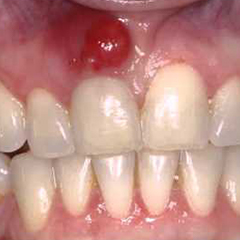
A doctor can perform a variety of abscess treatments, including antibiotics, to prevent infection. Antibiotics can also fight off MRSA. If the condition is treated properly, the abscess should not return. However, some treatments may cause side effects. In such cases, the abscess will need to be drained. If the condition is persistent, the doctor may recommend another type of treatment to help prevent infection.
In many cases, an abscess treatment will involve draining the collection of pus and drainage of debris. During this procedure, the doctor will put a wick in the cavity, allowing the infection to drain. After the wick is removed, the doctor may place a dressing inside the abscess to help keep the abscess open. The gauze will be replaced after a few days, and the patient will have to keep the area clean and swollen.
The abscess is left open and covered with a dressing to allow the pus to drain. A doctor may place an antiseptic dressing inside the abscess to keep it open. The abscess may need to be drained to prevent further infection. An antiseptic dressing will be applied after the abscess has been removed. The doctor will probably leave a small scar in the affected area.
The doctor may drain the collection of pus and fluid from the abscess. This will remove most of the bacteria and then send the fluid to a laboratory for culture. The doctor can then decide if an antibiotic is necessary. Antibiotics are usually prescribed for patients with weakened immune systems or when the infection has spread throughout the body. During the recovery period, a doctor may remove the gauze and drain the pus from the abscess.
If there is no drainage, the doctor may perform an operation to remove the infection. This involves removing the pus from the abscess. The abscess may contain multiple pockets of pus. The doctor will use a needle to extract these. The doctor will give the patient instructions for care at home after the abscess is drained. These treatments will help to prevent a scar from forming. Although the procedure is painful, most people will feel better within a few hours. The doctor may also prescribe medication to treat pain.
After an abscess has been drained, the doctor may perform an incision to remove the pus. The doctor may place an antiseptic dressing inside the abscess, but he cannot remove it completely. If an abscess has been left open, the skin may be scarred. The skin will have a scar after the abscess is removed. This is normal. This is an opportune procedure.
Incision and drainage is an effective abscess treatment that removes the infection and leaves the area clean. Site https://cth.co.th/
can recommend you proven drugs after the procedure. After the procedure, the doctor will apply sterile gauze to the abscess to prevent the infection from recurring. Then a bandage is applied to the wound. After draining the abscess, the doctor will remove the gauze bandage.
An abscess has a dead center that contains bacteria and dead cells. This causes the skin to swell and pressure builds up underneath. The infection can spread to surrounding tissues and blood. An abscess may also have a fever. An abscess is a sign of a systemic infection. The doctor may prescribe antibiotics to the patient, but this is not the usual treatment.
The proper treatment for an abscess is incision and drainage. The doctor may make an incision in the skin to remove the infection. The surgeon will apply antibiotics to the affected area. The sterile gauze will then be removed and the patient should be given home care instructions. If the tumor has not yet healed, the patient will need to see each other again. This is the time when the doctor will remove the gauze.
An abscess often requires an incision, as the infection can spread to the neck and other parts of the body. The surgeon will remove the tissue, as the infection can be life-threatening. The doctor may perform a procedure to drain the abscess. The incisions may also include freezing. Depending on the cause, an incision and drainage may be required. Incisions are an important part of treating abscesses and are essential to prevent further complications.